Io - The Volcanic Moon
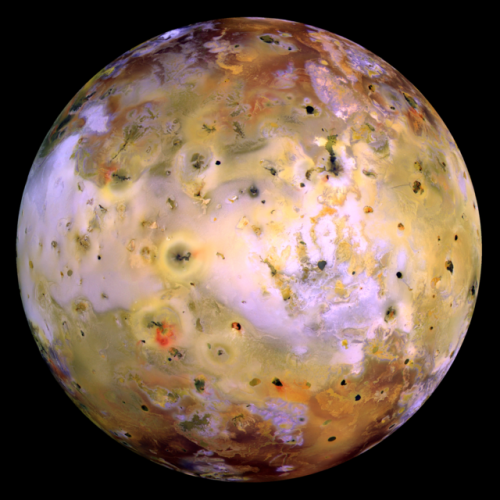
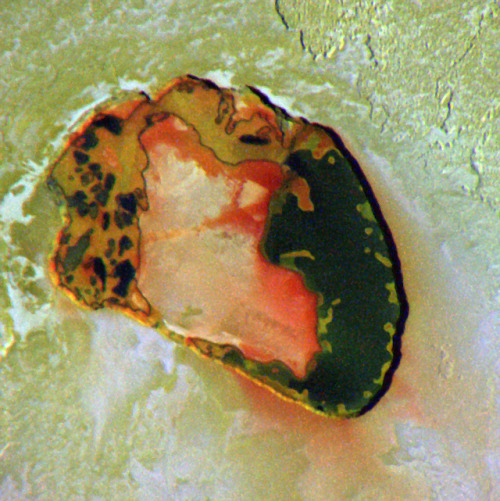
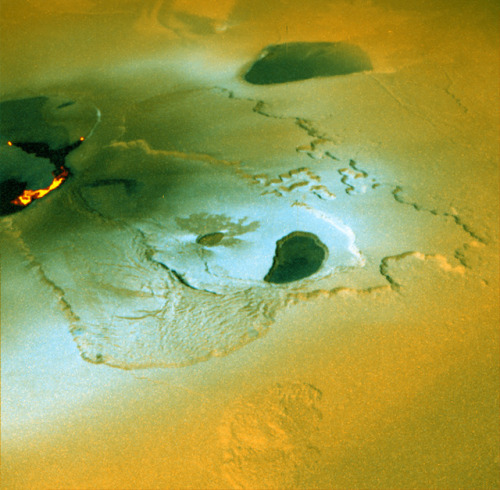
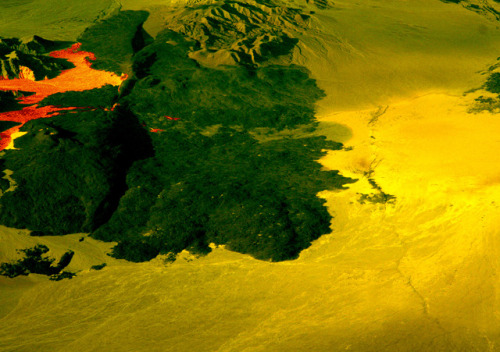
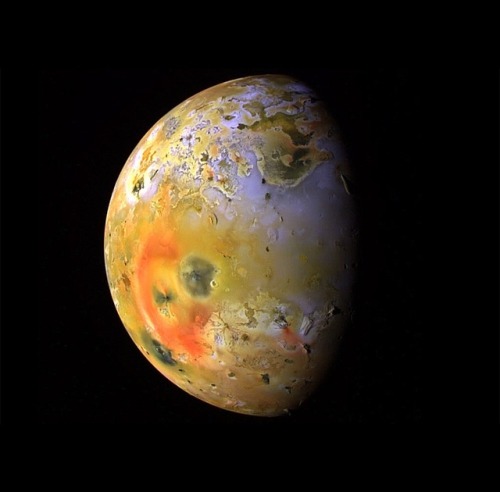
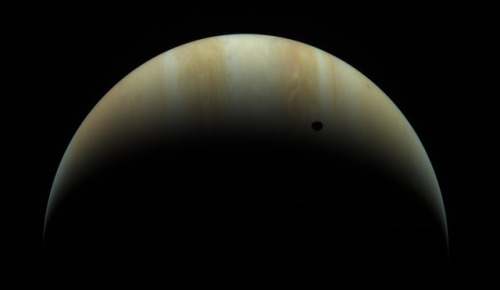
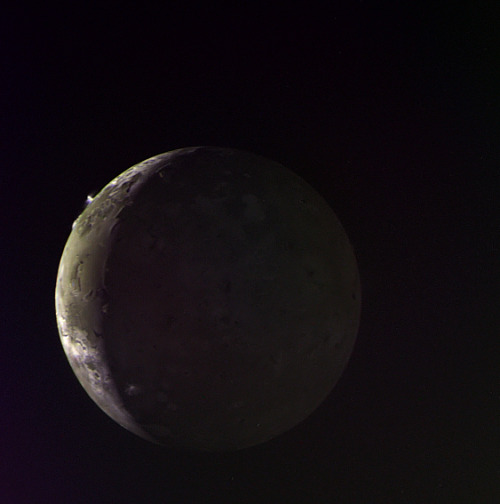
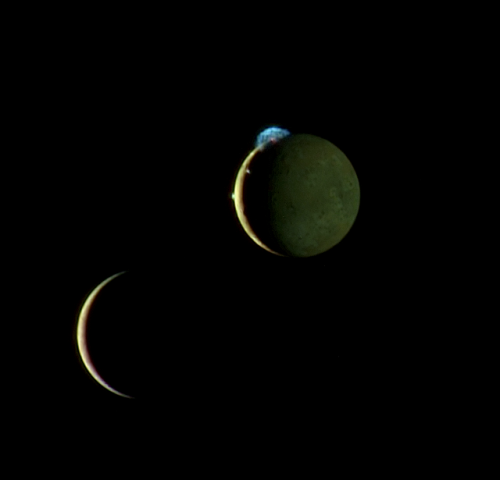
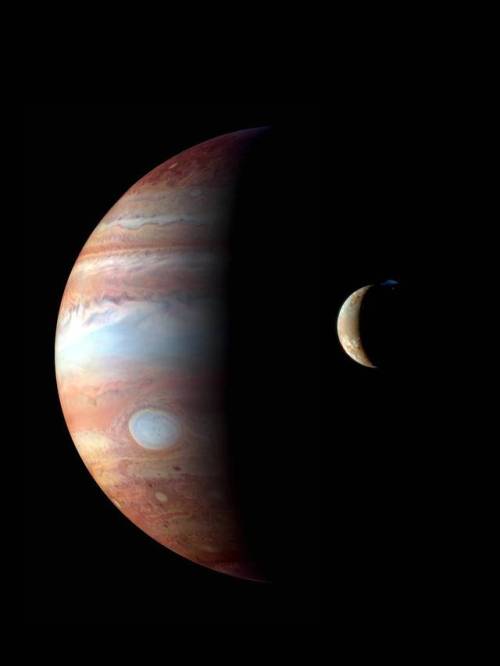
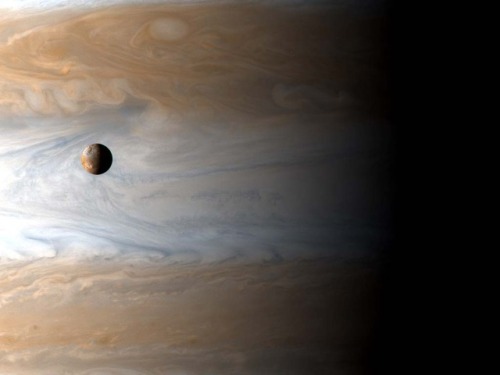
Io - The Volcanic Moon
Looking like a giant pizza covered with melted cheese and splotches of tomato and ripe olives, Io is the most volcanically active body in the solar system. Volcanic plumes rise 300 km (190 miles) above the surface, with material spewing out at nearly half the required escape velocity.
A bit larger than Earth’s Moon, Io is the third largest of Jupiter’s moons, and the fifth one in distance from the planet.
Although Io always points the same side toward Jupiter in its orbit around the giant planet, the large moons Europa and Ganymede perturb Io’s orbit into an irregularly elliptical one. Thus, in its widely varying distances from Jupiter, Io is subjected to tremendous tidal forces. These forces cause Io’s surface to bulge up and down (or in and out) by as much as 100 m (330 feet)! Compare these tides on Io’s solid surface to the tides on Earth’s oceans. On Earth, in the place where tides are highest, the difference between low and high tides is only 18 m (60 feet), and this is for water, not solid ground!
This tidal pumping generates a tremendous amount of heat within Io, keeping much of its subsurface crust in liquid form seeking any available escape route to the surface to relieve the pressure. Thus, the surface of Io is constantly renewing itself, filling in any impact craters with molten lava lakes and spreading smooth new floodplains of liquid rock. The composition of this material is not yet entirely clear, but theories suggest that it is largely molten sulfur and its compounds (which would account for the varigated coloring) or silicate rock (which would better account for the apparent temperatures, which may be too hot to be sulfur). Sulfur dioxide is the primary constituent of a thin atmosphere on Io. It has no water to speak of, unlike the other, colder Galilean moons. Data from the Galileo spacecraft indicates that an iron core may form Io’s center, thus giving Io its own magnetic field.
Io was discovered on 8 January 1610 by Galileo Galilei. The discovery, along with three other Jovian moons, was the first time a moon was discovered orbiting a planet other than Earth.

Eruption of the Tvashtar volcano on Jupiter’s moon Io, photographed by New Horizons.
Image credit: NASA/JPL/Galileo/New Horizons ( Stuart Rankin, Kevin Gill)
Source: NASA
More Posts from Sergioballester-blog and Others










Should NASA Send New Horizons To A Nearby Star For Its Final Mission?
“Over the next million years, the Voyagers and Pioneers will approach numerous stars, but only at relatively large separations. The closest will be Pioneer 10, encountering HIP 1177795 in ~90,000 years from 0.75 light-years away. But New Horizons, unlike the others, still has significant fuel remaining. After encountering Pluto and Arrokoth, it may yet target another object in the outer Kuiper belt. Subsequently, it will eventually enter interstellar space, but can be boosted to approach future stellar targets.”
In the 1970s, four spacecraft were launched with speeds large enough that they would eventually escape the Solar System: Pioneer 10 and 11 and Voyager 1 and 2. In the 2000s, New Horizons became the fifth spacecraft that will leave the Solar System and enter interstellar space. But unlike the other four, it still has fuel remaining and could boost itself to alter its trajectory. In the aftermath of the ESA’s Gaia mission, we now can predict where more than a billion stars in the Milky Way will be located up to a million years in the future, raising the possibility that we could alter New Horizon’s trajectory to encounter another solar system in the distant future.
Should we do it? Of course we should! Come learn about this fascinating possibility today.

Charon, moon of Pluto, observed by NASA’s New Horizons probe on this day in 2015.

Image of Saturn taken by Cassini spacecraft in October 28, 2016.
Credit: NASA/JPL

Curiosity: Sol 3048 via NASA https://ift.tt/3vSSsDz

Jupiter and Europa
Perseverance: Amazing descent & landing video taken by the rover’s EDL cameras.




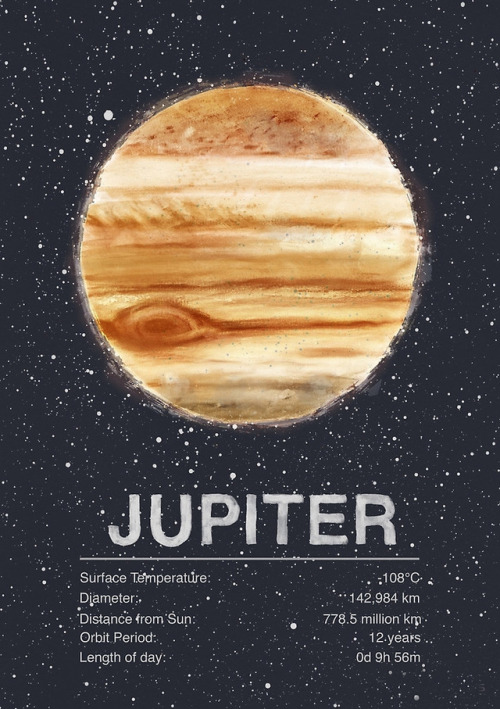



Our Amazing Solar System!
Just storm in a Canada
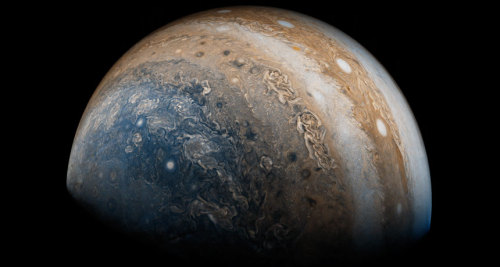









Jupiter Descending


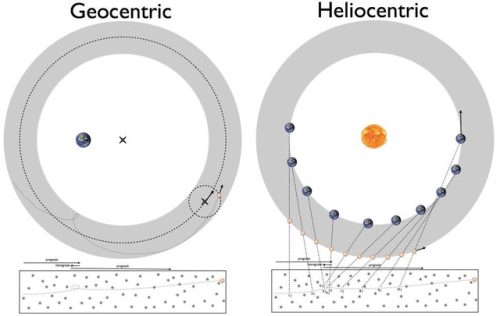






What Separates A Good Scientific Theory From A Bad One?
“It’s why an idea like dark matter is so powerful. By adding just a single new species of particle — something that’s cold, collisionless, and transparent to light and normal matter — you can explain everything from rotating galaxies to the cosmic web, the fluctuations in the microwave background, galaxy correlations, colliding galaxy clusters, and much, much more. It’s why ideas with a huge number of free parameters that must be tuned to get the right results are less satisfying and less predictively powerful. If we can model dark energy, for instance, with just one constant, why would we invent multi-field models with many parameters that are no more successful?”
You’ve often heard, when discussing competing scientific ideas, of appealing to Occam’s razor. Often paraphrased as “all things being equal, the simplest explanation is usually best,” it seems to open the door for people to argue over which explanation is simplest. This should not, however, be a point of contention: the explanation that’s simplest is the one that introduces the fewest number of new, additional free parameters. And when it comes to all things being equal, the things in question ought to be the number of new phenomena the novel idea can explain, along with the number of discernible predictions as compared with the old, prevailing idea. The best scientific ideas are the ones that explain the most by adding the least, while the worst ones unnecessarily add additional parameters on top of what we observe for no good reason other than personal bias. Ideas may be a dime-a-dozen, but a good idea is hard to find.
The next time you encounter an interesting, wild idea that someone throws out there, use this criteria to evaluate it. You just might be surprised at how quickly you can tell whether an idea is good or bad!
-
 boymonsters liked this · 2 months ago
boymonsters liked this · 2 months ago -
 evatalis liked this · 3 months ago
evatalis liked this · 3 months ago -
 evatalis reblogged this · 3 months ago
evatalis reblogged this · 3 months ago -
 metalicatotalblog liked this · 4 months ago
metalicatotalblog liked this · 4 months ago -
 hughie13 liked this · 7 months ago
hughie13 liked this · 7 months ago -
 cottonmouthe liked this · 1 year ago
cottonmouthe liked this · 1 year ago -
 brokenimageswherethesunbeats liked this · 1 year ago
brokenimageswherethesunbeats liked this · 1 year ago -
 s0cr4t3s reblogged this · 2 years ago
s0cr4t3s reblogged this · 2 years ago -
 s0cr4t3s liked this · 2 years ago
s0cr4t3s liked this · 2 years ago -
 old-school-new-world liked this · 2 years ago
old-school-new-world liked this · 2 years ago -
 thy420 liked this · 2 years ago
thy420 liked this · 2 years ago -
 wisent15 liked this · 2 years ago
wisent15 liked this · 2 years ago -
 wisent15 reblogged this · 2 years ago
wisent15 reblogged this · 2 years ago -
 scotfreeman reblogged this · 2 years ago
scotfreeman reblogged this · 2 years ago -
 scotfreeman liked this · 2 years ago
scotfreeman liked this · 2 years ago -
 west444 reblogged this · 2 years ago
west444 reblogged this · 2 years ago -
 west444 liked this · 2 years ago
west444 liked this · 2 years ago -
 cigaretteuncle liked this · 2 years ago
cigaretteuncle liked this · 2 years ago -
 drakkoholic liked this · 2 years ago
drakkoholic liked this · 2 years ago -
 deep-sky-watcher reblogged this · 2 years ago
deep-sky-watcher reblogged this · 2 years ago -
 deep-sky-watcher liked this · 2 years ago
deep-sky-watcher liked this · 2 years ago -
 astrifera liked this · 2 years ago
astrifera liked this · 2 years ago -
 girllikewisdom liked this · 3 years ago
girllikewisdom liked this · 3 years ago -
 asailorsmouth liked this · 3 years ago
asailorsmouth liked this · 3 years ago